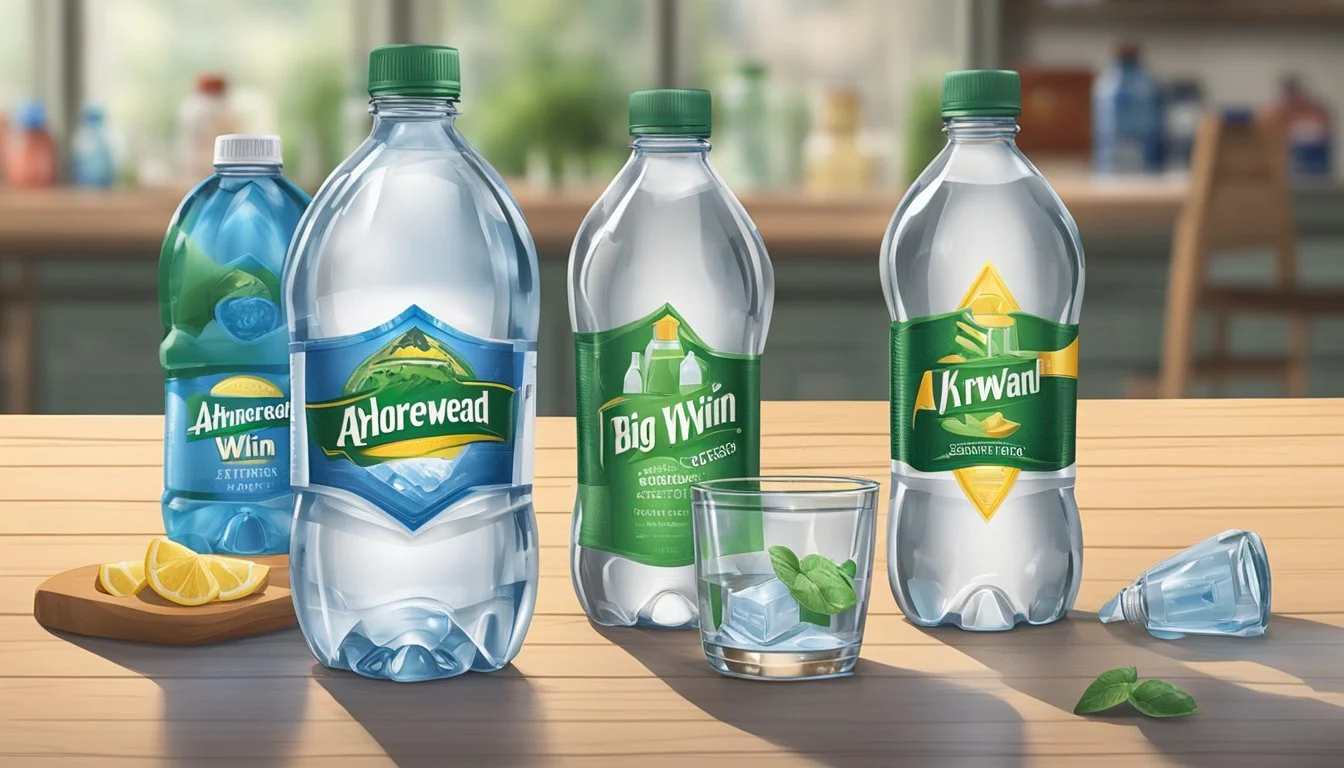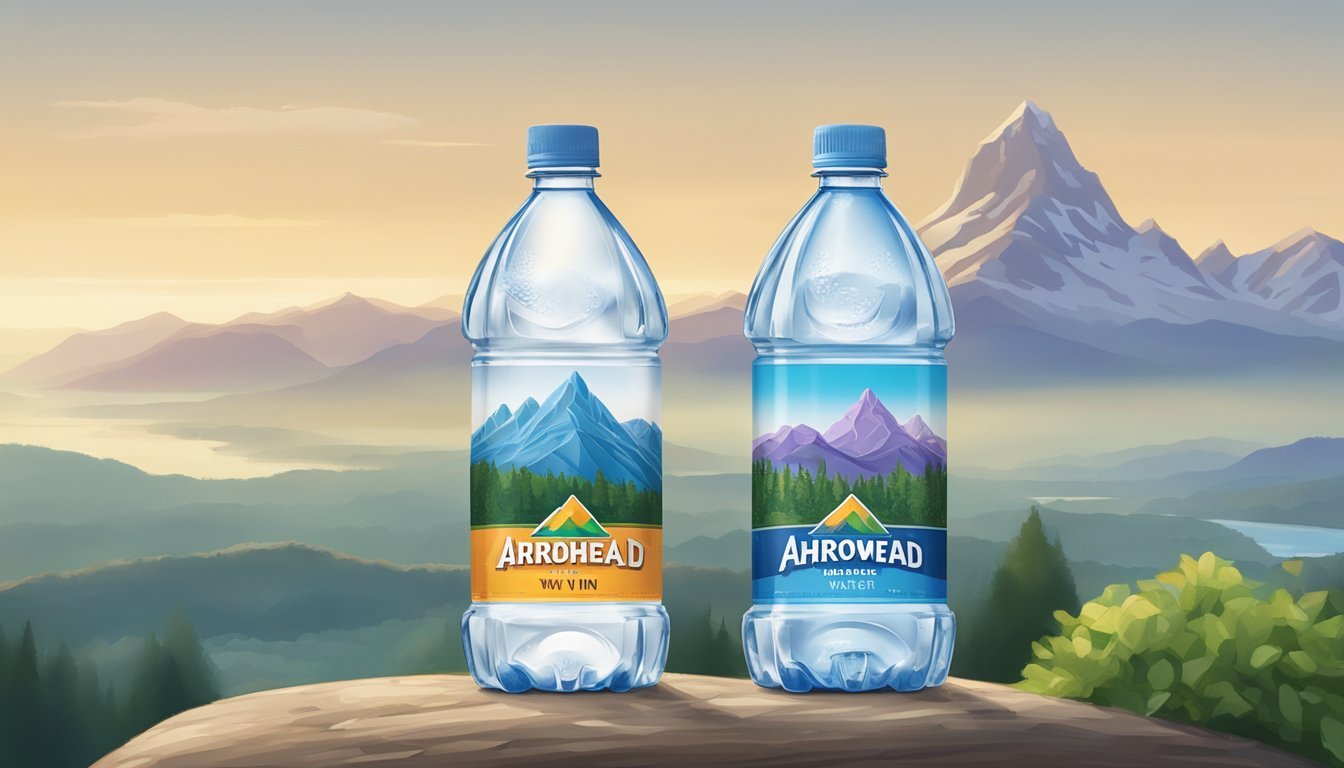Arrowhead vs. Big Win
Comparing Quality and Taste
When it comes to choosing the right bottled water, consumers often seek purity, reliability, and taste. Arrowhead, known for sourcing water from the San Bernardino Mountains, prides itself on offering fresh, mountain spring water that emphasizes natural purity. Its long-standing presence in the market since 1905 has earned it a reputation for quality and trust among consumers.
Big Win, on the other hand, positions itself as a value-driven option, often found at popular retail chains. It aims to deliver hydration without compromising on basic quality, appealing to budget-conscious shoppers looking for a reliable source of bottled water. While it may not boast the same historical prestige as Arrowhead, it competes directly by providing an accessible and economical choice.
For those seeking a blend of natural purity and a trusted brand, Arrowhead proves to be the superior choice. Meanwhile, Big Win remains a solid contender for those prioritizing affordability and basic hydration needs. This comparison will explore both brands in depth, considering factors like taste, source, and overall value to help readers make an informed decision.
The Basics of Bottled Water
Bottled water comes in various types, each with its own sources, labels, and regulations. Understanding these differences helps consumers make informed decisions about their water choices.
Types and Sources of Bottled Water
Spring Water, Mineral Water, Purified Water, and Sparkling Water are the main types.
Spring Water is collected from natural springs and retains the minerals found in its source.
Mineral Water must contain at least 250 parts per million of total dissolved solids from a geological and physically protected underground water source.
Purified Water has been processed to remove chemicals and impurities, often through distillation, deionization, or reverse osmosis.
Sparkling Water contains carbon dioxide, either naturally or added during the bottling process.
Understanding Water Labels
Labels on bottled water provide critical details about the product.
Source: Indicates where the water is from, such as a specific spring or a municipal source.
Purity Processes: Lists methods used for purification, like reverse osmosis or distillation.
Mineral Content: Shows levels of minerals present, which can impact taste and health benefits.
pH Levels: A neutral pH is around 7, while anything above is alkaline, and below is acidic.
Expiration Date: Suggests shelf life, although bottled water doesn’t usually spoil.
Checking these labels helps consumers choose water that aligns with their taste preferences and health needs.
Regulations and Standards
Bottled water in the United States is regulated by the FDA (Food and Drug Administration), while the EPA (Environmental Protection Agency) regulates tap water.
FDA standards for bottled water require it to meet specific safety and operational standards.
EPA sets similar criteria for municipal tap water, including limits on contaminants like lead and bacteria.
Both organizations ensure that water is safe to drink but standards may vary slightly, particularly in allowable mineral content and purification methods.
Knowing these regulatory standards highlights the measures in place to ensure water quality.
Comparing Arrowhead and Big Win
Both Arrowhead and Big Win bottled waters offer distinct qualities that cater to different preferences. In the following subsections, their brand origins, water sources, treatment processes, and taste profiles are compared to provide a clearer understanding of what each brand delivers.
Brand Origins and History
Arrowhead has a longstanding tradition in the bottled water industry, sourcing its water from natural springs in the western U.S. and Canada. It was founded over a century ago, and its reputation for quality spring water has grown since.
Big Win, a relatively newer brand, is part of a larger conglomerate and often seen in grocery stores particularly owned by Rite Aid. While its brand doesn't have the historical depth of Arrowhead, it aims to provide accessible hydration options.
Water Source and Treatment Processes
Arrowhead sources its water from mountain springs, specifically from locations known for their clean and natural spring water, such as the Rockies. This gives it an edge in purity and natural taste. The water undergoes minimal treatment to preserve its natural mineral content while ensuring safety.
Big Win typically utilizes municipal sources, which then undergo extensive treatment processes like reverse osmosis to ensure purity. This method is effective in eliminating impurities but often requires the addition of electrolytes post-treatment to enhance taste and hydration quality.
Taste Profile Analysis
Arrowhead is known for its light, crisp taste with a slightly astringent finish. It retains mineral notes from its natural spring sources, which many find refreshing and distinctive. Some reviewers mention a hint of tanginess that can be polarizing.
Big Win, on the other hand, tends to have a more neutral taste profile due to the reverse osmosis process. This can be advantageous for those who prefer their water without strong mineral flavors. The addition of electrolytes in some of its products enhances hydration but can sometimes leave a subtle, artificial aftertaste.
Health and Hydration
Both Arrowhead and Big Win bottled waters provide essential hydration. Differences in their mineral and electrolyte content can impact overall health and hydration levels.
Minerals and Electrolytes in Bottled Water
Arrowhead water, sourced from mountain springs, contains natural minerals like calcium, magnesium, and potassium. These elements support muscle function and bone health.
Big Win, meanwhile, undergoes purification that may strip some minerals but often adds electrolytes for taste and hydration. Enhanced electrolyte content helps maintain fluid balance and prevents dehydration.
Here's a brief comparison:
Mineral/Electrolyte Arrowhead Big Win Calcium Present Variable Magnesium Present Variable Potassium Present Added
This table shows the presence and variation in mineral content, emphasizing choices based on personal health needs.
Packaging and Environmental Impact
Both Arrowhead and Big Win's bottled water brands stress sustainable practices. Their efforts in bottle materials and recycling initiatives reflect a commitment to reducing environmental footprints.
Bottle Materials and Recyclability
Arrowhead uses plastic bottles with a significant portion of their product line incorporating 50% recycled plastic. This approach is intended to lessen the reliance on virgin plastic. Additionally, Arrowhead bottles are BPA-free, which is important for consumer health and environmental safety.
Big Win also embraces plastic bottles, emphasizing recyclability. Their efforts include using BPA-free plastics and promoting recycling initiatives. While not specifically noted for the percentage of recycled materials, Big Win continues to focus on innovations that could further their sustainability.
Environmental Responsibilities of Water Brands
Arrowhead's commitment to environmental sustainability extends beyond materials to encompass the entire lifecycle of their products. They focus on minimizing plastic waste, optimizing water sourcing methods, and supporting recycling programs.
Big Win, on the other hand, is advancing its sustainability campaigns through various environmentally friendly initiatives. These include reducing carbon footprints associated with production and distribution. While detailed figures are not as prominently featured as Arrowhead's, Big Win's ongoing efforts play a crucial role in their brand strategy.
Both brands clearly show dedication to decreasing environmental impacts, but they achieve this through different methods and levels of transparency about their practices.
Water Quality and Safety
Evaluating the water quality and safety of Arrowhead and Big Win involves examining how each brand tests for contaminants and purifies their water. Consumers seek reassurance that their bottled water is both clean and safe to drink.
Testing for Contaminants
Arrowhead and Big Win test their water for contaminants to ensure it aligns with health standards. Arrowhead, sourced from mountain springs, is analyzed for various impurities, including minerals and possible pollutants. Regular testing covers a spectrum of contaminants, including PFAS chemicals, ensuring safe consumption.
Big Win, on the other hand, undergoes rigorous examination to detect any contaminants. Their process involves checking for bacteria, heavy metals, and other harmful substances. The frequent quality checks guarantee that the water adheres to safety regulations and standards, which helps in maintaining a reliable product on the market.
Water Purification Techniques
Arrowhead utilizes natural filtration processes through volcanic rock, which contributes to its clean, crisp taste. Additionally, further purification steps, such as ultraviolet and ozone sterilization, are employed to eliminate any remaining microorganisms and ensure purity.
Big Win employs a sophisticated purification system, akin to PepsiCo’s Hydro-7 system used by Aquafina. This entails several steps, including carbon filtration and reverse osmosis, designed to remove contaminants and improve the water's purity. These procedures ensure that the product meets high standards of safety and cleanliness, making it a trustworthy choice for consumers.
Consumer Experience and Accessibility
When comparing Arrowhead and Big Win bottled water, it’s essential to consider both flavor varieties and availability, as well as pricing, to understand their impact on the consumer experience.
Flavor Varieties and Special Editions
Arrowhead offers a range of natural and flavored waters. This includes classic spring water and variations like lemon and cucumber flavors. These options can be appealing to those looking for a light twist on plain water. Water sommeliers often praise Arrowhead for its balanced mineral composition, providing a natural taste profile without overwhelming the palate.
Big Win, primarily available through Rite Aid stores, tends to stick to the basics. It typically offers purified and distilled options, with fewer flavored varieties. While suitable for consumers seeking no-frills hydration, the lack of variety might be a drawback for those wanting something more exotic.
Availability and Pricing
Arrowhead is widely available across major grocery stores and online platforms, making it a convenient choice for many. It boasts a broad distribution network, especially in the western United States. The cost can vary, but it generally falls into the mid-range category for bottled water, offering a balance between quality and affordability.
Big Win is mostly found in Rite Aid locations, which might limit accessibility for some consumers. Though its pricing is typically more economical, reflecting its position as a store brand, the limited availability can be a significant factor for individuals who do not live near a Rite Aid or prefer to do their shopping elsewhere.




